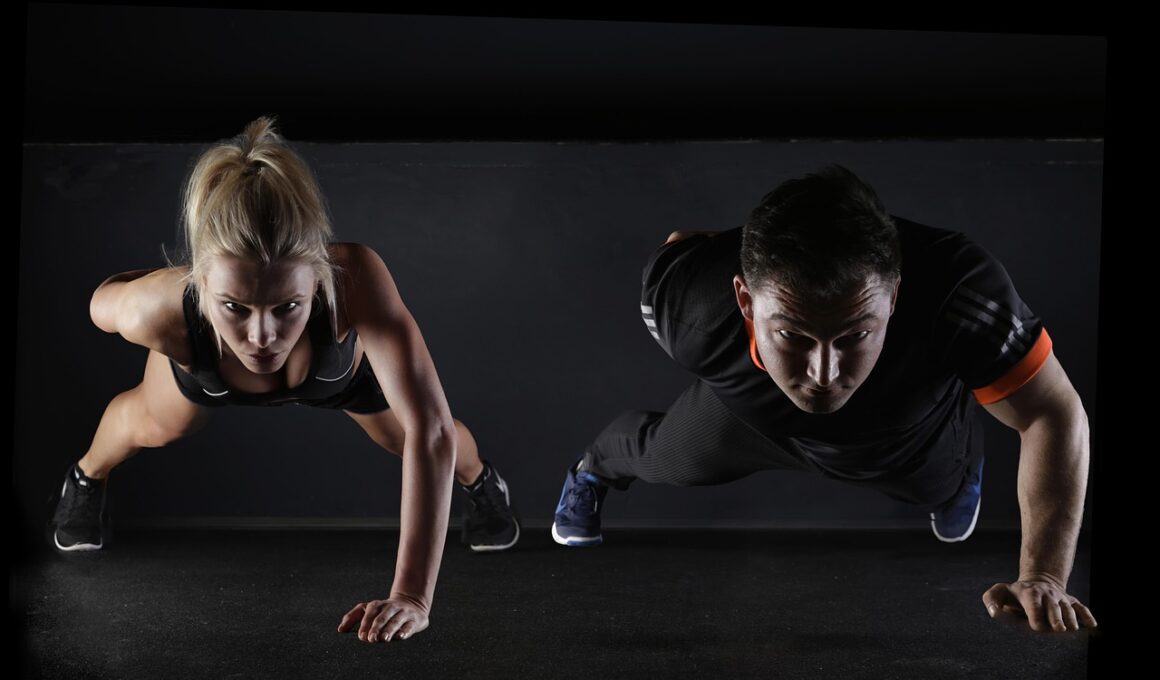The Science Behind PPL: Why It Works for Beginners
The Push, Pull, Legs (PPL) workout structure offers a clear, systematic approach to fitness for beginners. By organizing exercises into three distinct movements—pushing, pulling, and leg-based activities—this system allows anyone to target major muscle groups efficiently. This clear segmentation helps newcomers feel more comfortable and motivated, as they understand the purpose behind their workouts. This method maximizes both strength gains and muscle development. Beginners can follow a balanced routine by focusing on compound movements like bench presses, deadlifts, and squats. Far from being intimidating, PPL promotes a progressive overload strategy. As individuals grow stronger, they can gradually increase weights, ensuring consistent improvement. Each PPL session provides adequate recovery time, preventing burnout and injuries, making it a sustainable option for long-term fitness. Moreover, this split allows individuals to adjust intensity easily, facilitating a personalized experience. In terms of adaptability, the PPL regimen can vary based on an individual’s existing fitness level, ensuring relevance. Embracing PPL can offer insight into effective workout patterns, paving the way for enhanced physical health and improved self-esteem.
The effectiveness of PPL workouts stems from the balanced distribution of training sessions, ensuring every muscle group receives attention. A common structure involves working out three days a week, with each session dedicated to either pushing, pulling, or leg exercises. This split effectively allows one to target the upper body and lower body separately, facilitating significant muscle recovery. With push days focusing on chest, shoulders, and triceps, and pull days concentrating on the back and biceps, the approach nurtures muscle growth while preventing overexertion. Legs, encompassing quads, hamstrings, and calves, receive specialized focus every third session. Such targeted attention allows for maximizing efficiency in performance. For beginners, implementing a workout plan like this can foster habitual exercise, leading to consistent results. The structure encourages motivation, enabling new gym-goers to track their progress systematically. With this concentrated focus, individuals witness improvements in their lifts, observed through increased weights lifted and enhanced muscle definition. This positive reinforcement creates a rewarding cycle of dedication and accomplishment. Over time, participants find themselves becoming more enthusiastic towards their fitness journey, cementing their healthy lifestyle.
Additionally, PPL workouts emphasize versatility, making them suitable for various training goals. Beginners often have different objectives, be it weight loss, muscle gain, or improved endurance. The PPL structure allows for tailoring workouts based on these specific aims. For those seeking weight loss, increased repetitions with lighter weights and shorter rest times can be implemented. Conversely, those aiming for muscle hypertrophy can focus on moderate weights with higher rest intervals between sets. This flexibility within the PPL framework saves time, enabling users to achieve multiple fitness goals efficiently. Many beginners may also appreciate the workout’s adaptability, integrating it with their unique daily schedules or committed fitness regimes. Variations can include adjusting sets, reps, or even incorporating cardio components into their routines. This means individuals can remain engaged, minimizing boredom and turning workouts into enjoyable activities rather than chores. The approach encourages exploration of different exercises, keeping enthusiasm alive. Retaining a sense of novelty can enormously benefit anyone just starting their fitness journey, enhancing the likelihood of sticking with it long-term. As challenges propel growth, individuals create a more dedicated and enthusiastic environment.
Understanding the role of rest and recovery in any workout plan is vital for beginners, especially with a PPL regimen. This structured routine not only divides gym sessions effectively but also aids in proper recovery. After an intense workout focusing on pushing, pulling, or legs, muscle groups require sufficient time to repair and rebuild. PPL naturally incorporates these recovery phases into weekly plans, allowing each muscle group a break before its next demanding workout. Typically, a well-balanced PPL schedule can be organized to allow at least 48 hours of rest for specific muscle groups. This practice is crucial for reducing the risk of overuse injuries, which are often prevalent among beginners who might overtrain in attempt to expedite results. Gradually building workout intensity also contributes to reduced extremity pain and soreness, promoting overall workout enjoyment. Furthermore, recognizing the importance of nutrition during recovery plays into the PPL workout benefits. Proper hydration, nutritional timing, and adequate protein intake enhance muscle recovery significantly. Therefore, understanding the science behind rest and nutrition empowers beginners to make informed choices, optimizing their training for the long term.
Building a Consistent Routine
Consistency is pivotal for beginners embarking on fitness regimes such as PPL. Establishing a regular workout schedule encourages adherence and significantly contributes to long-lasting results. Notably, many new gym-goers struggle with maintaining motivation. Recognizing this challenge, the PPL structure addresses it by creating manageable goals. Dedicating specific days to push, pull, or leg workouts results in a straightforward plan that’s easy to remember. The three-day split allows for flexibility, enabling individuals to adapt their scheduling according to personal commitments or challenges. Overcoming the initial hurdles through established routines fosters a sense of responsibility and commitment. A solid weekly schedule, combined with accountability, supports empowering habits that can extend beyond workout sessions. Alongside a structured approach, incorporating variety into workouts can keep things fresh. Beginners are encouraged to explore different exercises or equipment, enhancing overall engagement. Engaging with a fitness community, whether friends or gym partners, can further boost accountability. Sharing goals and tracking progress collaboratively introduces an engaging aspect, turning workouts from solitary tasks into enjoyable experiences. This sense of community fosters encouragement, lending psychological support as individuals confront challenges.
In conclusion, the PPL structure is not just an effective workout regimen but also a learning experience for beginners. Engaging in this organized system exposes individuals to strategic workout planning, recovery principles, and the science behind progression. Mastering the push, pull, legs approach emboldens newcomers to appreciate their body’s capabilities while developing a deeper understanding of exercise benefits. Over time, they build foundation skills that can be implemented in various training regimes across their fitness journey. The broad array of exercises utilized within each session allows for skill diversification—making it easy to stay engaged while working towards fitness goals. Importantly, adopting a well-designed program like PPL fosters a positive mindset towards workouts, alleviating anxiety often felt by fitness novices. The excitement built from seeing gradual improvements encourages continued efforts and enhances overall well-being. Furthermore, experiencing incremental success promotes self-confidence, driving individuals to push boundaries in their fitness endeavors. Reinforcing the importance of a balanced workout routine, PPL serves as an outstanding vehicle for beginners to embark on transformative journeys toward healthier lifestyles, encouraging them to explore their potential.
The consistent emphasis on education, community, and adaptability within PPL training regimes helps beginner fitness enthusiasts embrace a core philosophy of gradual improvement. In this journey, individuals cultivate not only their physical strength but also gain intrinsic motivation and self-efficacy. The science behind PPL illustrates the necessity of structured workouts, recovery, and nutrition tailored for entry-level gym-goers. As individuals learn and grow within the PPL framework, they begin forging their path, engaging in subsequent workouts with enthusiasm and confidence. With a strong foundation established through well-planned exercise sequences, individuals can venture into advanced fitness methodologies once they outgrow the PPL regimen. Whether pursuing bodybuilding, functional strength, or sports-specific training, the principles learned through PPL continue to provide invaluable insights. Therefore, beginners should embrace the challenges and victories they encounter along their path to fitness. Ultimately, the PPL structure equips them with both the tools and knowledge needed to navigate the diverse fitness landscape. Promoting lifelong commitment to health, this workout model has the potential to change lives, one session at a time.


